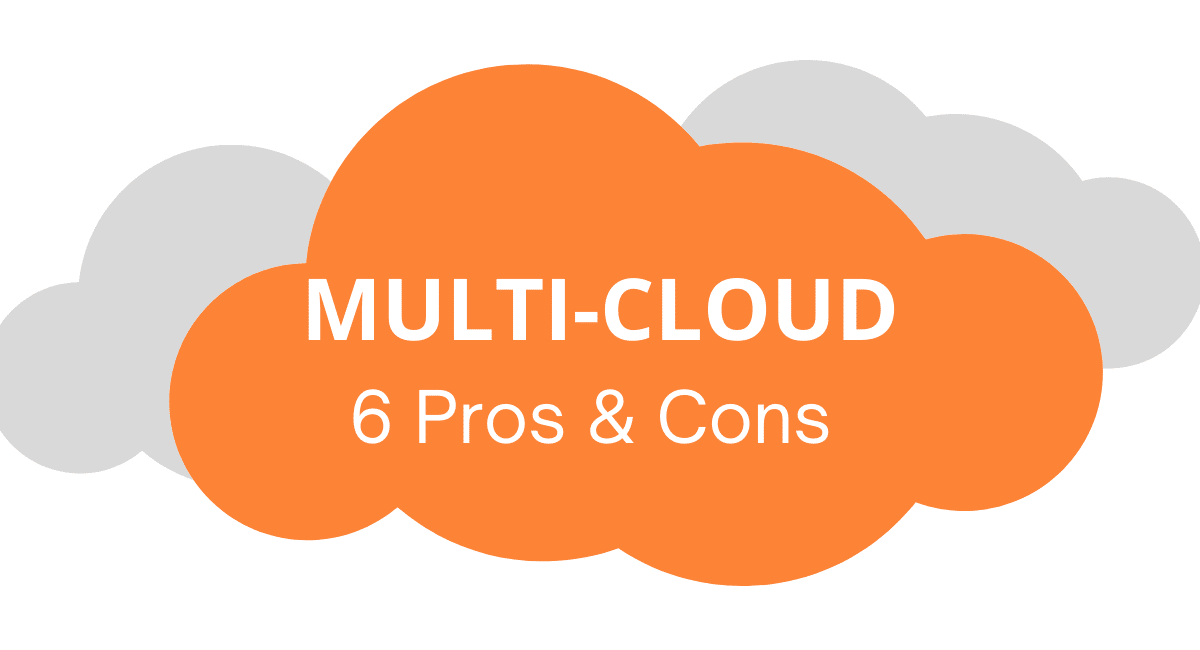As the use of a Multi-cloud becomes popular, it’s important for decision makers to understand its advantages and disadvantages.
A Multi-cloud strategy is becoming widely adopted by many enterprises for its flexibility and ability to be rapidly innovated and deployed. However, with other viable options for cloud, such as hybrid cloud becoming as effective. It is important for those decision makers to be well educated in on the pros and cons of these cloud strategies.
What is Multi-Cloud?
Simply put, Multi-Cloud is using multiple public and/or private clouds from different vendors and using their offerings to achieve the most benefit for your business. You may choose to procure a SaaS solution from one, run your own bespoke systems from another and perhaps utilise other services from more. It’s about finding the right mix for your business and risk appetite.
Pros of Multi-cloud
Flexibility
Where you are reliant and dependant on one (or more) providers for services that may be critical to your business. Having the ability to move any services that are running on one to another can achieve a level of flexibility if one provider is not performing, changes their offering or is no longer able to support your needs. It does not eliminate risk entirely, but more importantly it gives you options. In simple terms you can potentially “up and move” to another provider.
Resilience and risk management
Improving resilience allows organisations to avoid possible issues with a single provider. This may be as “simple” as a replicated solution you can spin up or as far as a full Disaster Recovery solution. It can help your business to mitigate risks in many ways.
Optimisation and customisation
Every organisation needs to manage its costs and its user experiences. With a multi-cloud solution, you have the ability to move services, so they are more cost-effective, perform better or are closer to the users that need them. For example, it may be better to have a solution that can scale up quickly in the cloud for busy periods, the day-to-day services that are used infrequently elsewhere and with those large files people need remaining close to them on-premise.
Geography and Lower Latency
Expanding on the points above, multi-cloud allows you to have an extended reach to where your users or services are most needed. The closer those services are to the end user, the faster accessing those services generally is and the better the experience for those using it.
Many vendors have multiple regions that you could run the services from, however how you design this is quite important. If you have the bulk of people working from an office in one location, is there much value in making that data available on the other side of the world?
Would an on-premise solution be better with replication to a cloud provider as a backup or for external teams to access? There are loads of ways to do this and it’s a benefit of multi-cloud that you can pick and choose the best solution for your needs – and then change it later if you need to.
Avoid Vendor Lock-In
The dreaded Vendor Lock-in scenario. Multi cloud does not eliminate this entirely, that’s another discussion, however by using a Multi-cloud strategy those risks could be reduced.
You could also be avoiding a technology lock-in as a single cloud vendors capability may be limited, changes over time, may no longer be suitable for your business and may not meet the required service levels – again it gives you options.
Cons of Multi-cloud
Vendor management
Let’s be honest. Multi-cloud adds complexity. You’re going to have multiple services from multiple vendors with multiple SLAs and so forth.
This will take time and resource to manage – although there are technical tools to wrangle the services that you may run across these, people still need to manage them and the vendors.
Cost Estimation and Optimisation
Along with the time and resources to manage this, you’ll also want to consider how you review the services for cost, if they are the best fit for what you’re doing and how, if you need to, move services from one provider to another.
Monitoring
It’s not just about the cost. It’s also about what things are happening, if they are online or not performing as you need them to. Each vendor may have it’s own tools to do so or you may want to invest in your own to monitor all the services that are running – it all adds up to time and resource to ensure it all is working as expected.
Security Risks
Ok, you have many services running over several clouds and possibly on-premise as well. It’s quite possible that for your own compliance requirements you need to ensure that all those services are secured, tested and are remaining secure.
You may have a large degree of logging for each provider which would need to be reviewed, again, time and resource dependencies may factor in here. You could use a SoC style service (or build your own) which can aggregate all those logs for you, monitor your services for risk and compliance and notify and report to you – all of which could add up depending what you need.
Compliance
How does your new provider comply with all the regulatory needs that you have? Are you a data processor or a controller? What status is your vendor? What sort of data are you storing? Where is it located? Who has access to it any why?
Just a few questions that may crop up. Your previous compliance may be based on an older scope of, for example, the data being in one location / on premise – moving this to multiple services will complicate things.
Vendor Lock-in
A traditional service stack, such as running VMs in an environment, may not be all that you need to do. What if you are purchasing SaaS? – You have very little control over changes that may be made in the future, which could jeopardise business processes or worse. What if you are going cloud-native with the vendors services? – how do you migrate if needed to another provider if things change?
It’s something that perhaps should be included in any risk analysis that you do as to what would happen if the provider changes or is no longer working as you need it so.
Networking
Bear with us here, we’ve been talking about cloud… it’s all over the internet? Well, yes, it is..
However if you have a traditional approach to connecting your users, for example via a VPN or an office location – is that going to be able to handle things as you need going forward? Is there a better way?
You may find that re-working this gives a much better experience for the user, that you may need to review what you use in the office, or move to a cloud based gateway for items such as internet access – which may (or may not) have a cost impact.
Why should I go to Nine23?
Nine23 offer multiple cloud solutions. Private Cloud (FLEX), Public Cloud (AWS, Azure, Google), Hybrid Cloud and a Community/Multi-Cloud offering.
For more information about our cloud offerings, check out our Cloud home page – Here
All of these offerings are underpinned by our Platform FLEX, a next-generation cloud platform infrastructure that is fully managed and Nine23-owned. It enables the end-user to function more effectively and improve productivity in the field; accessing, sending and sharing data as needed, without having to return to base for reporting or admin.
Nine23 are your trusted partner, we are here to help you from start to finish and it is our mission to deliver complete, secure IT solutions to enable the end-users in today’s workplace.
To start your journey with us please fill in the contact form or call us on 023 8202 0300.
For Public Sector organisations please find our solutions and services on the Digital Marketplace.



